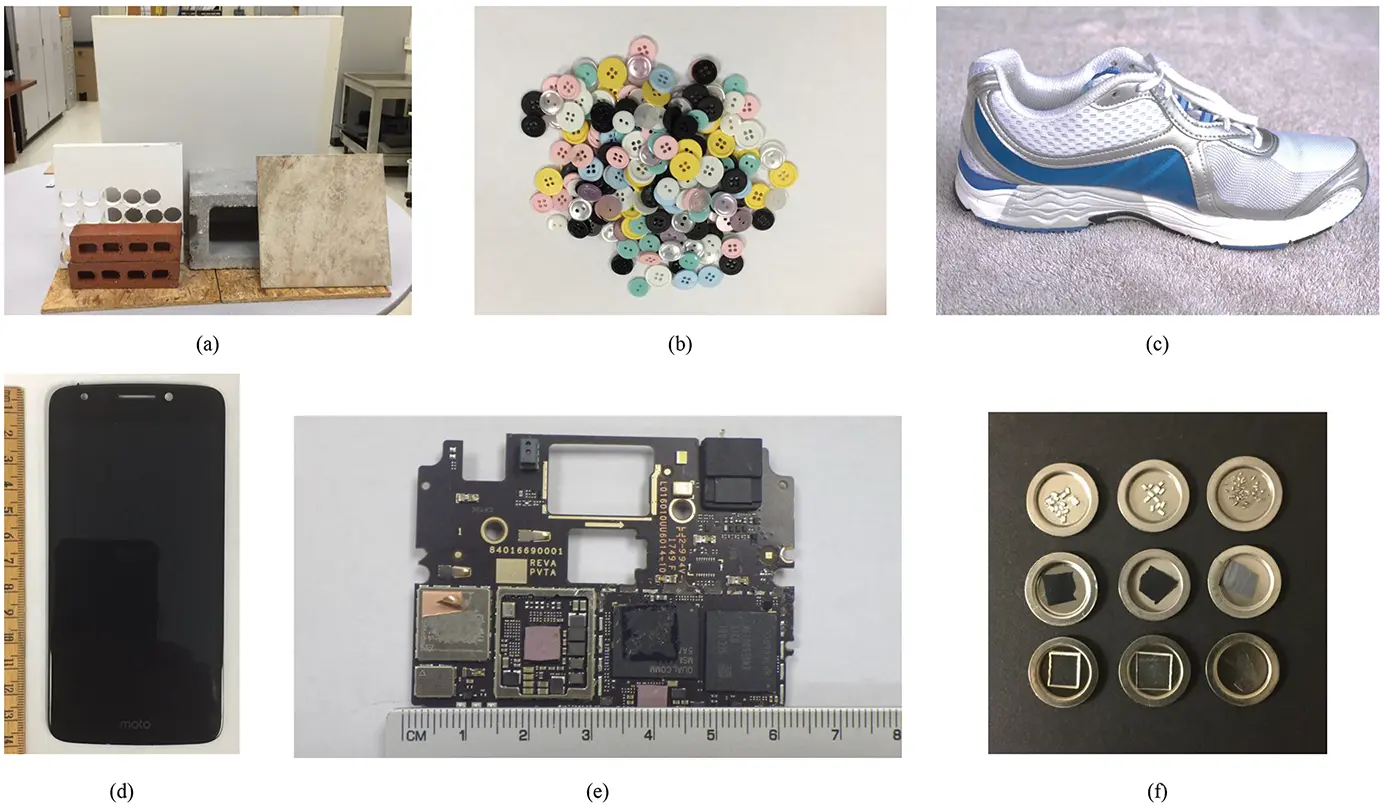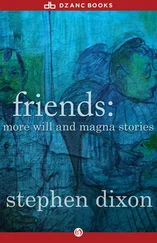1.3.4 Retrospective Dosimetry
In one sense, all passive methods of radiation dosimetry are retrospective in that they produce a measurement of dose only after the dose has been delivered. That is, they integrate the total dose received by the dosimeter since the dosimeter’s last reading. (This is opposed to active dosimeters, which record the dose or dose rate in real time during the exposure period.) However, the term “retrospective” is here reserved for assessing the dose received by an individual who may have undergone an acute exposure during a radiation accident and who may not have been wearing a conventional dosimeter at the time. During radiation accidents (i.e., accidental exposure to a radiation source or contamination by radioactive pollutants), members of the public may be exposed, and since it is not likely that they would have been wearing personal dosimeters, such as those shown in Figure 1.5, methods have to be devised in which estimates may be made of the doses to which they may have been exposed. Regrettably, the potential for intentional exposure of members of the public has also be considered, for example, in terrorist events using so-called dirty bombs (radiation dispersal devices), or even improvised nuclear weapons. Some incidents, be they accidental or intentional, involve only a small number of people, as may the case in an over-exposure of a patient undergoing radiotherapy, or perhaps an accident with an industrial source. In other cases, the number of potentially exposed people could be very large, as in a nuclear power plant accident such as those at Chernobyl (Ukraine) and Fukushima (Japan), or in a terrorist attack.
One approach to these situations, especially to potential large-scale exposure, has been to examine “fortuitous” dosimeters. These are materials that may be found on a person and that may be used as conventional radiation dosimeters. Luminescence, especially TL and OSL, from such materials has been studied extensively for its potential in this application. Examples include TL or OSL from the components of electronic devices (in particular, smartphones), items of clothing and accessory apparel (especially synthetic fibers) and common household materials (such as table salt and ceramic objects). Figure 1.7 shows some examples. Sensitivity to radiation, dose-response characteristics, and fading of the radiation-induced TL or OSL signal are major properties of interest.

Figure 1.7 Potential TL and/or OSL materials for personal retrospective dosimetry. (a) Building materials, including gypsum boards, bricks, ceramic tiles, and concrete blocks. (b) Buttons. (c) Shoes. (d) Smartphone (showing back glass; front protective glass and display glass can also be used). (e) Internal electronic components, including surface mount components and integrated circuits. (f) Materials prepared for TL and/or OSL analysis; top row – surface mount resistors from three different phone models; middle row – integrated circuit fragments; bottom row – protective front glass (left and middle) and display glass (right) from different phone models. Source: All photographs kindly provided by Sergey Sholom; except (c) – provided by the author.
The materials shown in Figure 1.7 are examples of fortuitous luminescence dosimeters for personal dosimetry. That is, they may be used for dose assessment to the individual wearing or possessing the material. In other applications of retrospective dosimetry, such materials are no longer available. This may be the case in after-the-fact dose assessment following acute or chronic events that took place several months or years previously. In these cases, the dose to the built-environment may be determined by extracting suitable materials from that environment to be used as TL or OSL dosimetry materials. Examples include quartz grains extracted from bricks, or ceramic materials such as tiles or electrical insulators, or even washbasins and toilets. Such measurements, when combined with modeling, enable estimates of the dose to air in the vicinity of the building. Time-and-motion modeling of the movement of people within the environment then allows estimation of the doses to which people may have been exposed. Example applications of this kind have included post-event dose assessment at Chernobyl, Hiroshima, and Nagasaki.
1.3.5 Environmental Dosimetry
Retrospective dose assessment to the built environment is but one example of environmental dosimetry – the assessment of dose to the environment and/or air. Another example, which is also a type of retrospective dosimetry, is measurement of the natural background dose as part of geological or archaeological dating. Here, an assessment of the dose rate in the soil of a sedimentary layer and the assessment of dose to the artefact found in that layer enables an estimate of the time the artefact has been buried (i.e., the age). Other examples might be the assessment of dose in the air or the soil surrounding a radioactive waste storage site where regular environmental dose assessments of the area surrounding the site are required for monitoring of waste leakage. A final example is the monitoring of doses in air surrounding a nuclear power plant. In each of these applications, both TL and OSL have found application and their use continues in this way.
Choose an application from one of the many noted in Section 1.3 and write a paper, based on library research, to illustrate the development and usage of TL, OSL, or RPL in that application.
1.4 Bibliography of Luminescence Dosimetry Applications
A useful bibliography describing these applications, and more, is listed below (alphabetical order, by first author).
Aitken, M.J. (1985). Thermoluminescence Dating. Academic Press, London.
Aitken, M.J. (1998) An Introduction to Optical Dating: The Dating of Quaternary Sediments by the Use of Photon-Stimulated Luminescence. Oxford Science Publishers, Oxford.
Bøtter-Jensen, L., McKeever, S.W.S., Wintle, A.G. (2003) Optically Stimulated Luminescence Dosimetry. Elsevier, Amsterdam.
Chen, R., Pagonis, V. (eds.) (2019). Advances in Physics and Applications of Optically and Thermally Stimulated Luminescence. World Scientific, New Jersey.
Furetta, C., Weng, P.-S. (1998) Operational Thermoluminescence Dosimetry. World Scientific, Singapore.
Horowitz, Y.S. (ed.) (1984). Thermoluminescence and Thermoluminescent Dosimetry, Vols I-III. CRC Press, Boca Raton.
McKeever, S.W.S., Moscovitch, M., Townsend, P.D. (1995). Thermoluminescence Dosimetry Materials: Properties and Uses. Nuclear Technology Publishing, Ashford.
McKinlay, A.F. (1981). Thermoluminescence Dosimetry. Adam Hilger, Bristol.
Oberhofer, M., Scharmann, A. (eds.) (1981). Applied Thermoluminescence Dosimetry. Adam Hilger, Bristol.
Perry, J.A. (1987). RPL Dosimetry: Radiophotoluminescence in Health Physics. Adam Hilger, Bristol.
Yukihara, E.G., McKeever, S.W.S. (2011). Optically Stimulated Luminescence: Fundamentals and Applications. Wiley, Chichester.
2 Defects and Their Relation to Luminescence
Crystals are like people, it is their imperfections which make them interesting .
– P.D. Townsend 1992
2.1 Defects in Solids
2.1.1 Point Defects
Discussion of the electronic transitions that occur during TL, OSL, and RPL rely upon the simplified energy band model already discussed in Chapter 1and illustrated again, in Figure 2.1. The depiction of a valence band completely full of electrons and a conduction band completely empty of electrons, with a constant band gap width throughout the crystal (Figure 2.1a) is a theoretical and ideal construct. It implies that all host atoms are exactly located in their equilibrium lattice positions dictated by their size and the nature of the bonds between them. No atoms other than the host atoms are assumed; that is, there are no impurity atoms. The conceptual picture also assumes an infinite crystal, with no surfaces. Of course, no such material exists in nature. Real materials contain defects, of which there are many possible types.
Читать дальше













